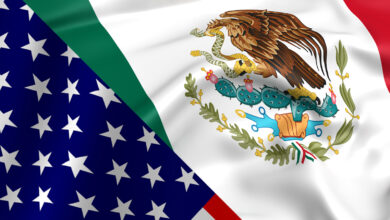Exploring the Wonderful World of Buší

Introduction to Buší
Buší is a special dish that comes from the Democratic Republic of Congo, filled with flavors and traditions that make it unique. This dish is not just food—it’s a celebration of culture and community, passed down through generations.
In this blog post, we’ll dive deep into the delightful world of Buší, learning about its origins, ingredients, and how to make it. Join us on this culinary adventure as we explore the vibrant flavors and cultural significance of Buší!
The Origins of Buší
Buší has its roots in the Democratic Republic of Congo, where it holds a special place in Congolese cuisine. This traditional dish has been enjoyed for generations, passed down through families as a symbol of cultural heritage. The origins of Buší date back to ancient times, reflecting the rich culinary traditions of the region.
In Congolese culture, Buší is more than just food—it’s a connection to the land and its people. The dish represents the use of local ingredients and traditional cooking methods that have been refined over centuries. It embodies the spirit of togetherness and celebration, often shared during festive occasions and family gatherings.
The history of Buší is intertwined with the daily lives of the Congolese people, showcasing their ingenuity and resourcefulness in using natural ingredients. From its humble beginnings to its modern interpretations, Buší continues to be a beloved dish that captures the essence of Congolese culinary heritage.
Ingredients that Make Buší Special
Buší stands out due to its unique combination of ingredients that create its distinctive flavor profile. The main components of Buší include leafy greens like collard greens, kale, or cabbage, which are rich in vitamins and minerals. These nutritious greens form the base of the dish.
In addition to leafy greens, Buší typically includes onions, garlic, and various spices that add depth and aroma to the dish. The use of local spices such as ginger, paprika, and cayenne pepper gives Buší its characteristic taste, often with a hint of heat. Palm oil is another essential ingredient that contributes to the dish’s rich texture and flavor.
What makes Buší special is its simplicity combined with flavorful ingredients sourced from the local environment. Each component plays a crucial role in enhancing the overall taste and nutritional value of the dish, making it a favorite among those who appreciate wholesome and hearty meals.
Step-by-Step Guide to Cooking Buší
Cooking Buší is a straightforward process that starts with selecting fresh and vibrant leafy greens. Begin by thoroughly washing and chopping the greens into smaller pieces, which makes them easier to cook. In a heated pan, sauté onions and garlic until they become fragrant and translucent.
Next, add the chopped greens to the pan and stir-fry them until they start to wilt and become tender. This step helps to enhance the flavors of the greens while retaining their nutritional value. Season the mixture with salt, pepper, and spices according to your taste preferences.
Once the greens are cooked to perfection, drizzle palm oil over the dish and continue cooking for a few more minutes. This allows the flavors to meld together, creating a delicious and aromatic Buší. Serve the dish hot as a side or main course, accompanied by rice, fufu, or other traditional Congolese staples.
Health Benefits of Buší
Buší is not only a flavorful dish but also offers numerous health benefits due to its nutritious ingredients. The leafy greens used in Buší are packed with vitamins A, C, and K, along with essential minerals like iron and calcium. These nutrients support overall health and well-being.
Leafy greens are known for their antioxidant properties, which help protect the body from oxidative stress and inflammation. They also promote digestion and support a healthy immune system. Buší is a great choice for those looking to incorporate more vegetables into their diet.
Moreover, Buší is a vegetarian dish that provides a good source of protein when combined with beans or tofu. It’s low in calories and high in fiber, making it a satisfying and nutritious meal option. By regularly enjoying Buší, individuals can benefit from its wholesome ingredients and contribute to a balanced diet.
Buší in Congolese Culture
In Congolese culture, Buší holds a significant place as a staple dish enjoyed by families and communities. It’s often served during festive occasions, celebrations, and communal gatherings, symbolizing abundance and togetherness. The preparation and sharing of Buší strengthen social bonds and traditions.
The communal aspect of enjoying Buší reflects the importance of food in Congolese culture, where meals are a time for connection and storytelling. Families come together to prepare and savor Buší, passing down recipes and cooking techniques from one generation to the next. This culinary tradition fosters a sense of unity and pride in cultural heritage.
Buší is also associated with hospitality and generosity, as hosts often serve it to guests as a gesture of welcome and appreciation. Its presence on the dining table signifies warmth and sharing, reinforcing the values of community and mutual support. In this way, Buší transcends its role as a dish and becomes a symbol of Congolese identity and tradition.
Variations of Buší Across Regions
Across different regions of the Democratic Republic of Congo, Buší may vary in its preparation and ingredients based on local customs and availability. For example, in rural areas, Buší may include wild greens and herbs gathered from the surrounding environment, adding unique flavors and textures.
In urban settings, Buší recipes may incorporate modern twists, such as additional vegetables or alternative cooking methods. Some variations of Buší include the use of smoked fish or meat to enhance the dish’s savory profile. These regional adaptations reflect the diversity of Congolese cuisine and the creativity of local cooks.
Despite these variations, Buší remains a beloved dish that unites people across different regions through its shared heritage. Whether enjoyed in villages or cities, Buší continues to be a comforting and satisfying meal that honors tradition while embracing innovation.
Sharing Buší: A Symbol of Togetherness
The act of sharing Buší goes beyond food—it represents a shared experience that fosters bonds among family members and friends. In Congolese households, preparing and serving Buší is often a collaborative effort, with everyone contributing to the meal’s preparation.
During celebrations and gatherings, Buší is served generously to guests, signifying hospitality and goodwill. The dish becomes a centerpiece of the occasion, encouraging conversation and laughter around the table. This tradition of sharing Buší strengthens relationships and creates lasting memories.
The spirit of togetherness embodied by Buší extends beyond cultural boundaries, resonating with anyone who values the joy of communal dining. Whether enjoying Buší in the Democratic Republic of Congo or abroad, the act of sharing this dish transcends language and connects people through the universal language of food.
Buší: A Dish for Festive Occasions
Buší holds a special place in festive occasions and celebrations throughout the Democratic Republic of Congo. It’s often featured prominently on the menu during weddings, religious festivals, and cultural ceremonies, symbolizing prosperity and abundance.
The presence of Buší at festive gatherings signifies the importance of tradition and heritage in marking significant life events. Its rich flavors and comforting qualities make it a popular choice for large gatherings, where it’s served alongside other traditional dishes.
During festive occasions, Buší becomes a symbol of joy and gratitude, bringing people together to share in the festivities. The preparation and serving of Buší are steeped in ritual and meaning, reflecting the deep cultural significance of food in Congolese society.
Enjoying Buší Around the World
As awareness of Congolese cuisine grows, Buší has gained popularity beyond the borders of the Democratic Republic of Congo. Congolese diaspora communities around the world have introduced Buší to new audiences, showcasing its unique flavors and cultural heritage.
In restaurants and homes outside of Congo, Buší is celebrated for its simplicity and deliciousness. Food enthusiasts and adventurous eaters seek out Buší as a way to experience the authentic flavors of Congolese cooking.
The global appeal of Buší highlights the universal love for flavorful and wholesome dishes that transcend cultural boundaries. Whether enjoyed in its country of origin or abroad, Buší continues to captivate taste buds and hearts, embodying the spirit of culinary exploration and appreciation.
Conclusion
In conclusion, Buší is more than just a dish—it’s a journey through the vibrant flavors and cultural heritage of the Democratic Republic of Congo. From its humble origins to its modern interpretations, Buší reflects the resilience and creativity of Congolese cuisine.
Through its use of local ingredients and traditional cooking methods, Buší represents the connection between food, community, and identity. It’s a dish that brings people together, fostering unity and celebration during festive occasions and everyday meals.
Whether you’re exploring the history of Buší or preparing it in your own kitchen, embrace the spirit of togetherness and joy that this dish embodies. Let Buší inspire you to appreciate the richness of culinary traditions and the shared experiences that unite us all.





